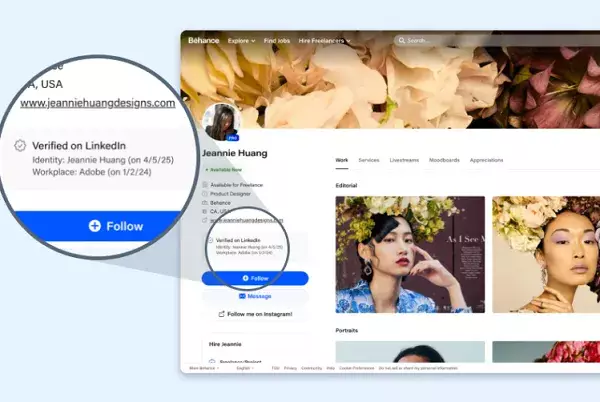In today’s hyper-connected digital landscape, where the line between real and fabricated personas often blurs, LinkedIn’s recent strides toward fortifying identity verification mark an essential pivot. The introduction of its third-party ID verification system isn’t just a minor feature upgrade; it’s a revolutionary move aimed at cultivating an atmosphere of trust in professional interactions. Launched in 2023, this initiative encourages users to verify their identities through reputable third-party services, effectively signaling a commitment to genuine engagement in networking. This is not merely a transactional relationship; rather, it is a profound cultural shift. With 80 million active participants in this voluntary ID validation process, LinkedIn has positioned itself not just as a networking tool but as a steward of professional integrity.
The urgency of such a framework cannot be overstated. In an era plagued by the dual demons of impersonation and misinformation, the need for transparent and credible digital interactions is at an all-time high. Trust has become a much-coveted currency, especially within professional spaces where the stakes are elevated and reputations hinge heavily on verified information.
Going Beyond Celebrity Endorsements
LinkedIn’s approach to verification significantly contrasts with the celebrity-centric verification prominently displayed on platforms like Twitter or Instagram. By actively engaging its user base and allowing professionals to showcase their authenticity, LinkedIn champions a model that prioritizes genuine relationships over flashy but often hollow endorsements. The recent verification markers serve not only as badges of honor but as essential tools in helping users curtail legitimate avenues for engagement and collaboration.
The platform’s unique identity verification does more than just provide a sense of security; it revolutionizes the way professionals can interact with one another in various digital spaces. Credibility, once confined to a singular platform, can now flow seamlessly across multiple environments. The collaboration with third-party platforms like Adobe, for instance, exemplifies how LinkedIn can serve as an anchor in a realm defined by its possibilities while fortifying users against the perils of impersonation.
Cross-Platform Credibility and Its Implications
The strategic partnership between LinkedIn and Adobe for ID verification illustrates a promising model for evolving online identity management. By integrating LinkedIn ID verification into Adobe’s Content Authenticity app and Behance platform, professionals can now visibly express their credentials with a “Verified on LinkedIn” badge. This not only enhances the visibility of verified creators but actively simplifies the validation process on other platforms that may not have the resources to develop intricate systems of credibility. The symbiosis of these platforms marks a significant leap forward in establishing a trustworthy digital ecosystem.
However, with this innovative model comes the dual-edge nature of accountability. The very notion of universal verification can provoke discomfort among those who value their privacy. Many users may find the idea of strict ID verification bordering on invasive, sparking a debate on how to balance the demand for accountability against the rights of individuals to navigate the digital sphere anonymously.
Transforming Identity Ownership
As LinkedIn champions the integration of ID verification and digital ownership, a notable paradigm shift emerges in how professionals assert both their identity and the ownership of their creative output. This transition offers a powerful tool in combating the rise of digital content theft and AI-generated impersonation. LinkedIn’s collaboration with Adobe to support Content Credentials is pioneering; it creates new avenues for professionals to safeguard their work while establishing a creditable link between creators and their contributions.
The landscape is shifting; creators can now embed metadata in their work akin to a digital thumbprint. This degree of transparency could act as a bulwark against the rampant misuse of intellectual property, ensuring that rightful creators maintain their connection and credibility even in transcendent digital spaces.
The Need for Legislative Action
LinkedIn’s innovative move toward ID verification also opens avenues for broader social dialogues surrounding the need for legislative action on social media standards. As the platform sets new norms in digital verification, it evinces a broader framework that could inform policy discussions aimed at addressing the critical issues of online identity security. The proactive nature of LinkedIn’s strategy could indeed inspire legislators to embrace similar methods of verification across various digital platforms, thereby establishing baselines for accountability in an increasingly complex online environment.
In a digital realm often characterized by chaos and deception, LinkedIn’s initiative stands out as a beacon of responsibility, fostering a community where trust and authenticity are not just encouraged but mandated. The evolution of professional networking is upon us; dialogue and action surrounding online identity must evolve in equal measure to ensure that trust is sustained amidst an unyielding tide of digital uncertainty.









Leave a Reply